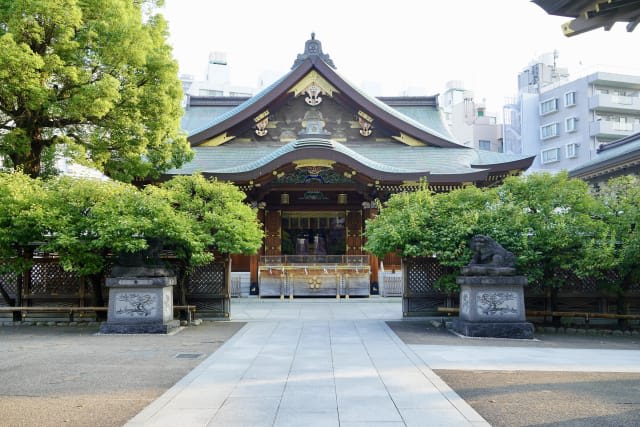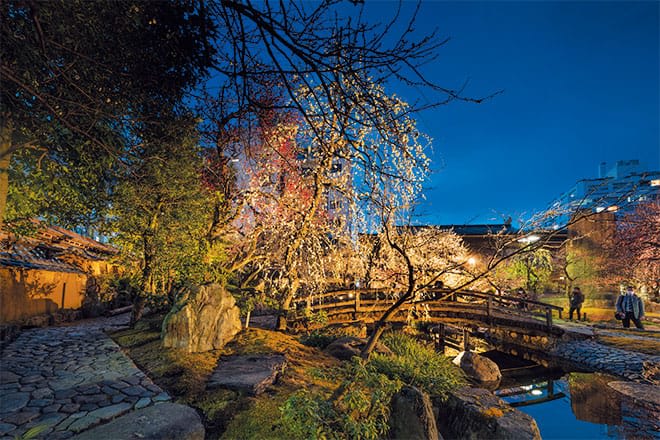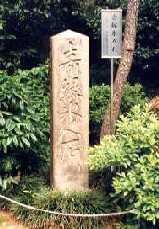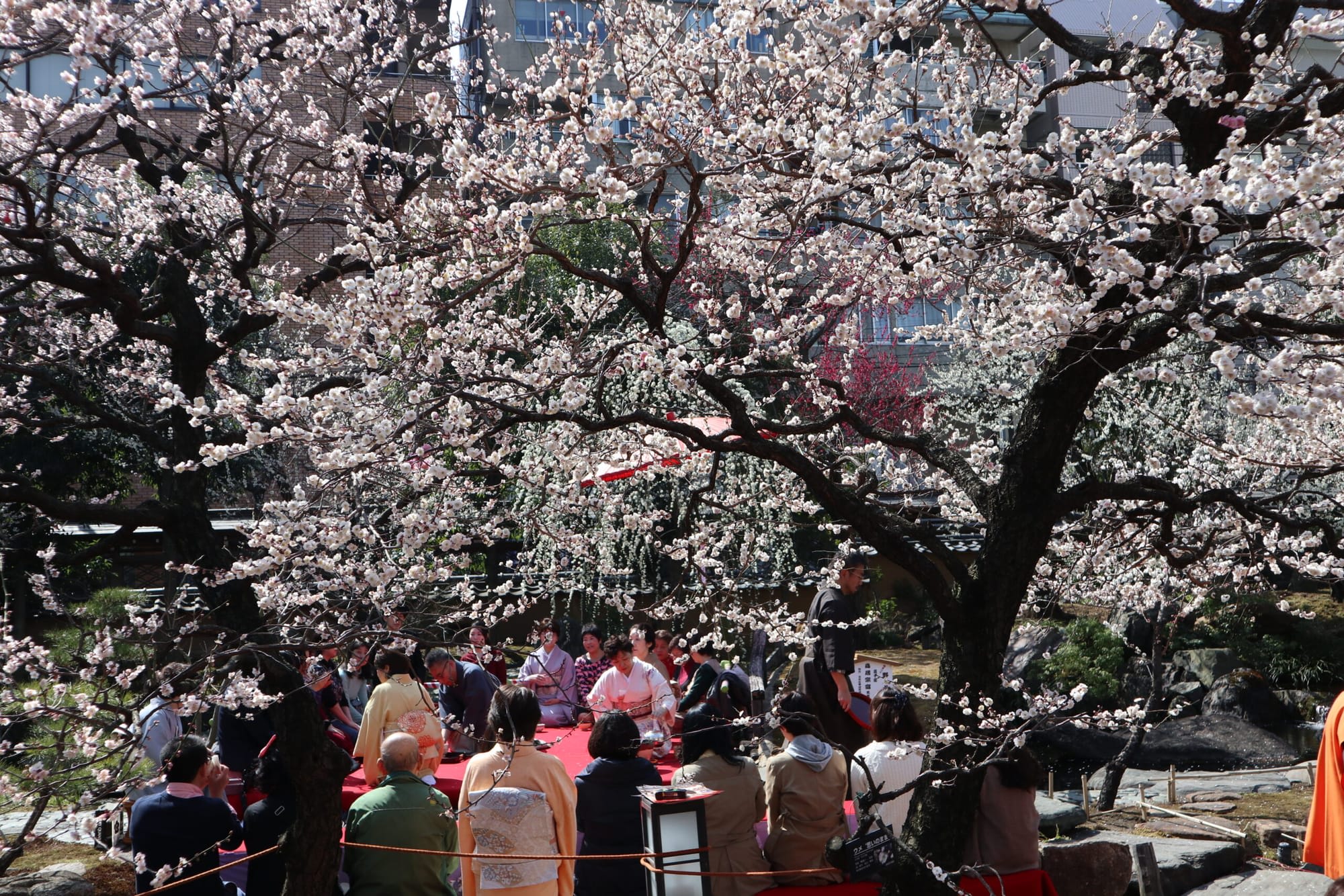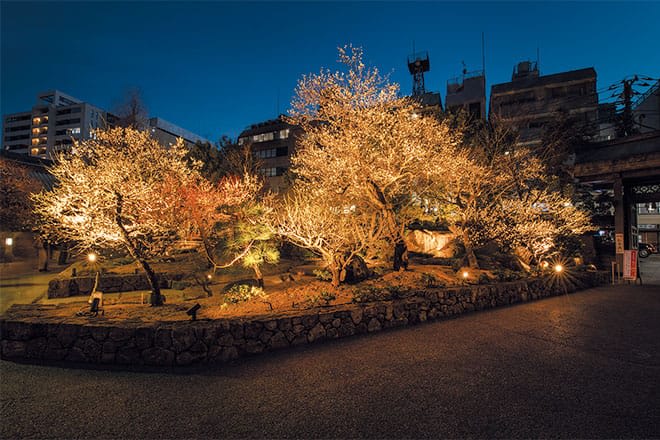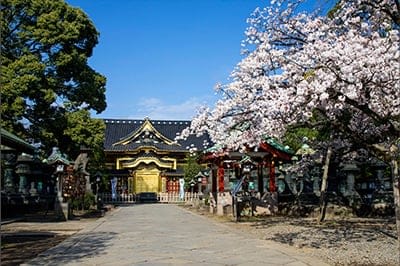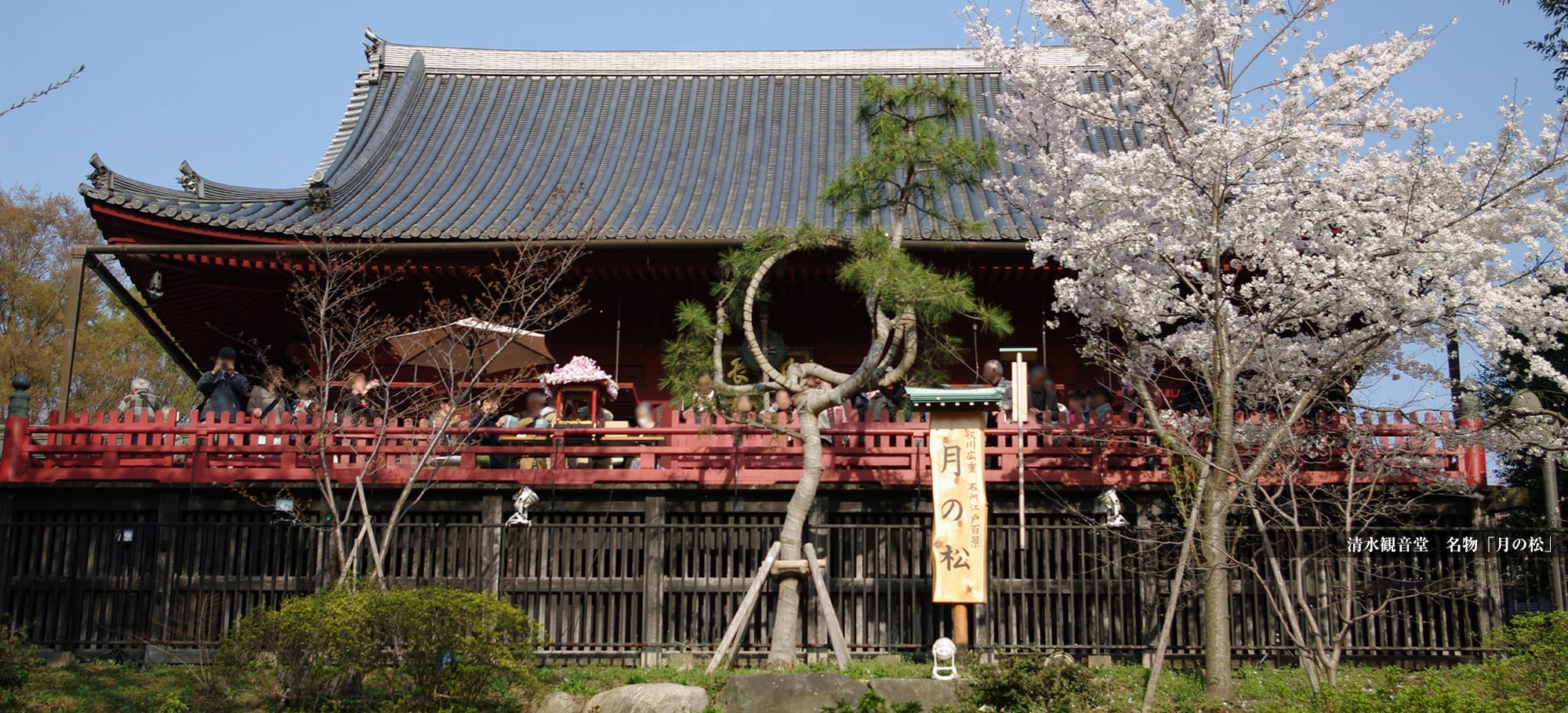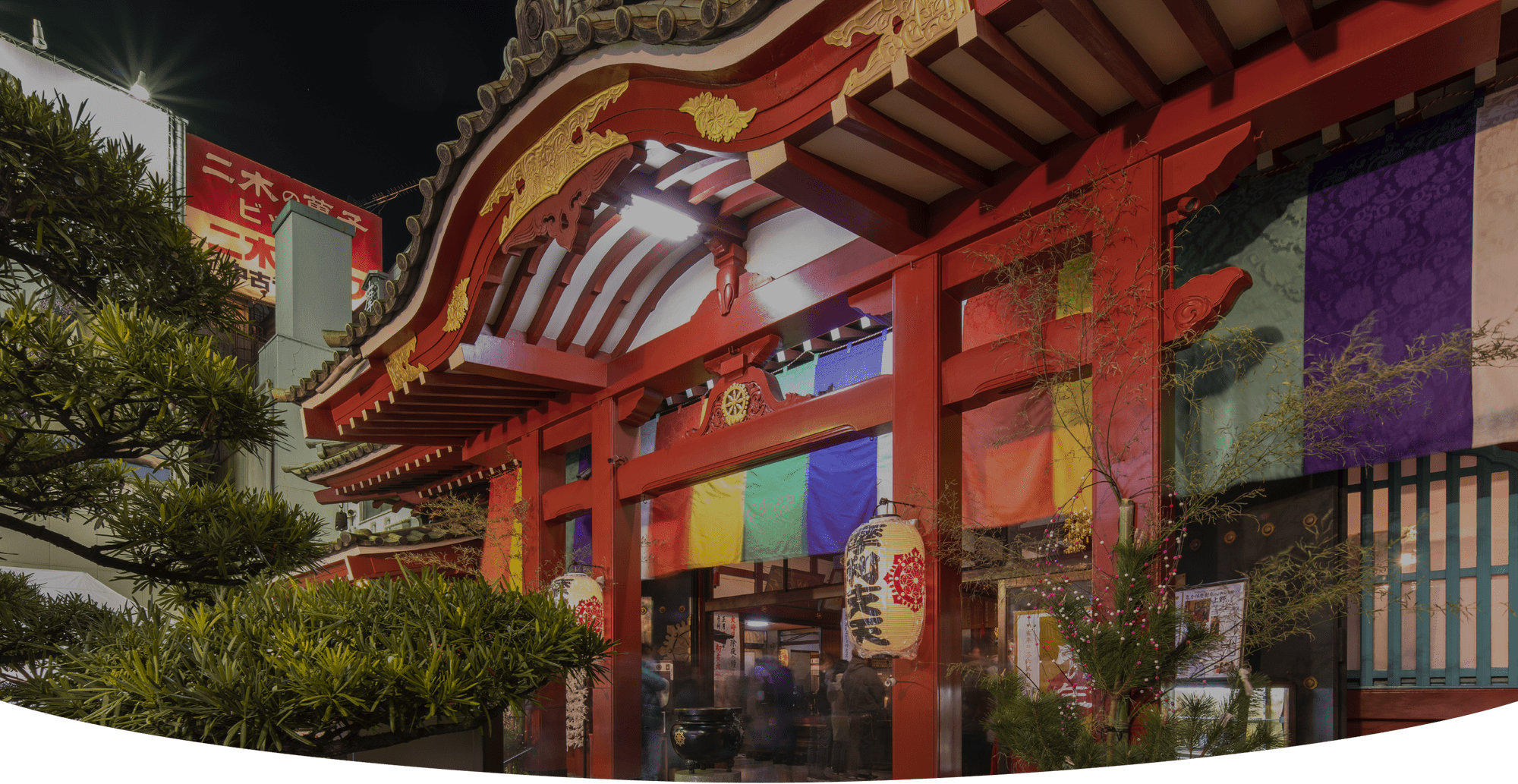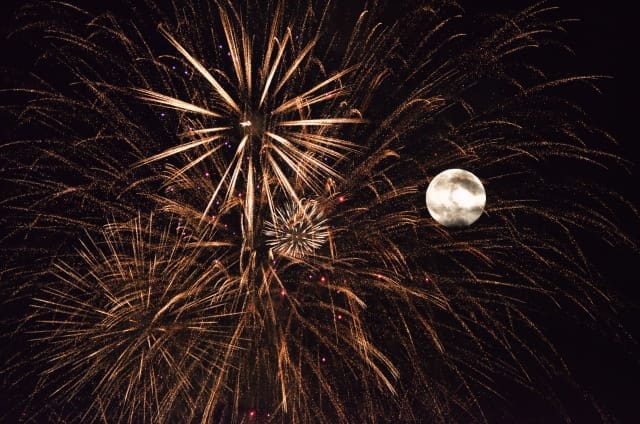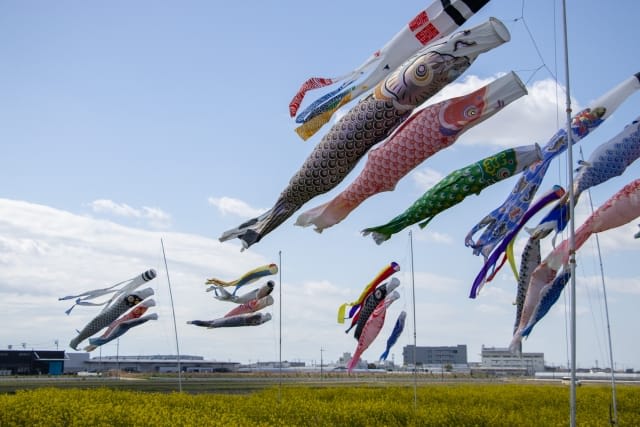Yushima Tenmangu Shrine: Must-see Things and Access Guide 2025
Ueno in Tokyo is a famous tourist spot known for its museums, art galleries, and zoo. The entire Ueno Park area was once occupied by Toueizan Kaneiji Temple. While traditional temples have been loved by locals, the area also has a history of shrines being relocated from other regions, making the area around Ueno Park rich with shrines and temples.
Near Ueno Park lies the Yushima area, which is extremely popular among tourists for its fusion of traditional Japanese atmosphere and modern buildings. The biggest highlight is Yushima Tenmangu, a shrine with ancient history where you can experience Japanese traditions firsthand.
This article introduces the highlights and attractions of Yushima Tenmangu, including its history.

Yushima Tenmangu: A Shrine Dedicated to the God of Learning, "Sugawara no Michizane"
Yushima Tenmangu is a prestigious shrine established approximately 1,600 years ago. It enshrines Sugawara no Michizane, who is famous as the god of learning. During exam season in winter (December to March), many worshippers visit to pray for success in their examinations.
When exploring Yushima Tenmangu, try looking for the plum blossom crest (symbol mark). This mark of the plum blossom, which Michizane deeply loved, is carved everywhere from the shrine's roof tiles to hanging lights. Finding many of these might bring you extra good fortune!
Who is Sugawara no Michizane?
Sugawara no Michizane was a scholar from about 1,200 years ago who greatly influenced Japanese academics and culture. He was highly regarded for his exceptional scholarship, particularly in Kanshi (traditional Chinese poetry) and prose. Today, he is worshipped as the god of learning by students and scholars alike.
Shrines dedicated to Michizane are called "Tenmangu" and exist throughout Japan. Notable ones include Dazaifu Tenmangu in Fukuoka Prefecture, where Michizane's grave is located, Kitano Tenmangu in Kyoto, and Osaka Tenmangu.
5 Must-See Highlights at Yushima Tenmangu
The Solemn "Front Torii Gate," Registered as Tangible Cultural Property
Source: Official website
The copper "Front Torii Gate," bearing an inscription from about 400 years ago, is the oldest cast torii gate remaining in Tokyo. This historically valuable torii has been designated as a tangible cultural property and continues to welcome numerous visitors to Yushima Tenmangu.
The bases of the two torii legs are shaped like plum blossoms. Above them, you'll find decorative Karajishi (mythical lion-dogs from Chinese and Japanese tradition) - don't forget to check these out!
Since the torii marks the boundary between the sacred shrine grounds and the secular world, remember to bow before passing through it. If you're unsure about proper etiquette, feel free to observe and follow other visitors' actions.
The Beautiful "Main Shrine Buildings" Made of Hinoki Cypress
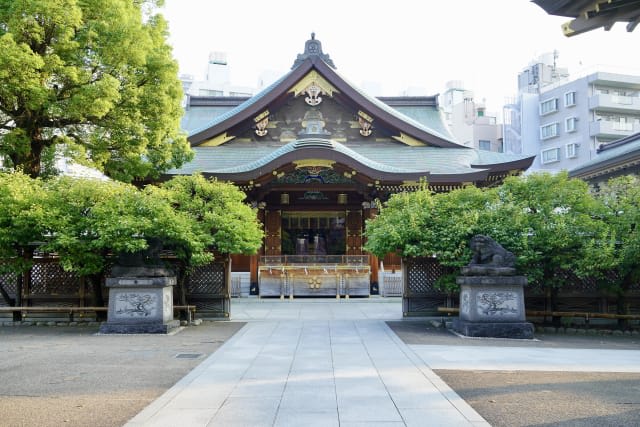
The shrine buildings of Yushima Tenmangu are pure wooden structures made from 250-year-old Kiso hinoki cypress.
While new wooden structures are generally not permitted today for fire safety reasons, Yushima Tenmangu's buildings received special permission and continue to preserve the traditional shrine architecture style from the Edo period.
The worship hall (haiden) at the front of the shrine complex features vermillion pillars and elaborate decorations, creating a design that combines strength and elegance. The intricate carvings demonstrate the exceptional craftsmanship of Edo period artisans.
While the main sanctuary appears subdued in color from a distance, it's surprisingly colorful up close. Try taking photos of the entire shrine building from afar and compare them with close-up shots of the interior - you'll find it interesting!
Built in "Gongen-zukuri" Style, Connecting the Main Sanctuary and Worship Hall with an Offering Hall
Source:Kotobank
At Yushima Tenmangu, the main sanctuary (honden, where the deity is enshrined) and the worship hall (haiden) are connected by an offering hall (heiden, where offerings are made to the deity). This architectural style is known as Gongen-zukuri, one of Japan's traditional shrine architectural styles.
The connection between the main sanctuary and worship hall symbolizes the link between the deity and worshippers. This creates an enhanced sense of sanctity and allows visitors to feel closer to the deity while praying.
The Shrine Buildings are Spectacularly Illuminated During the "Plum Festival"!
Source:Iwasaki Denki
The "Stroking Bull" of Yushima Tenmangu: Different Benefits Based on Where You Touch
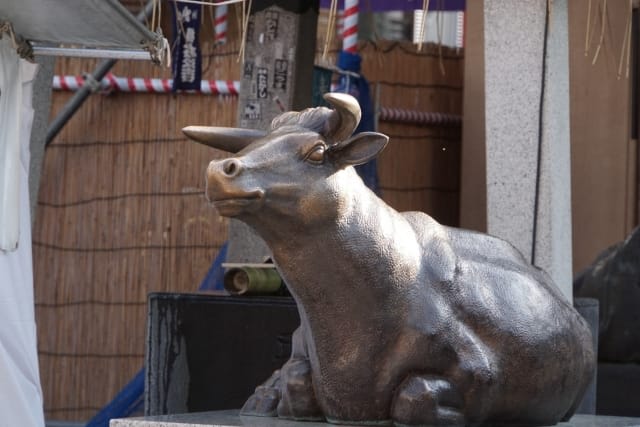
At Yushima Tenmangu, the "Stroking Bull" (Nadeushi) has become famous due to the deep connection between Sugawara no Michizane and oxen. Sugawara no Michizane was born in the Year of the Ox (according to the traditional East Asian calendar using 12 animals to represent years) and also passed away in the Year of the Ox. Before his death, he left instructions related to oxen, saying "Place my remains on an ox and let it rest where the ox stops." Due to these strong connections with oxen, Yushima Tenmangu has bull statues installed on its grounds.
For those seeking wisdom, stroke the bull's head; for better posture, stroke its back to receive these blessings.
Extra Shiny Head from Many Student Visitors
There are two bull statues at Yushima Tenmangu, one on each side of the chozuya (purification fountain). The heads are particularly shiny because many students visit to pray for success in their entrance examinations. It's said that stroking the head of these bulls, which are "messengers of the Tenjin deity," grants wisdom. Please try touching the head yourself to receive this wisdom. You might feel the history of countless people who have made their wishes here.
Togakushi Shrine and Sasazuka Inari Shrine near the Karamon Gate
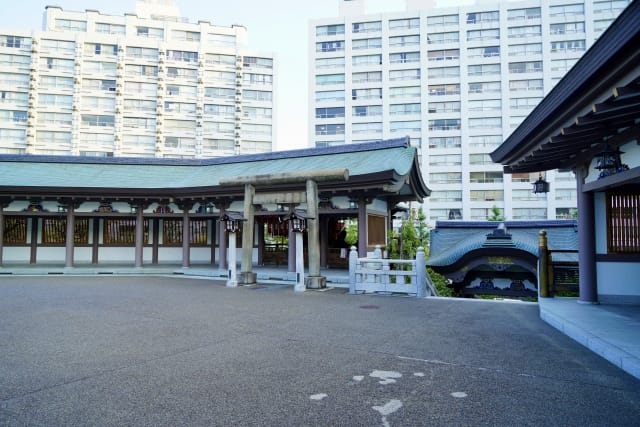
After worshipping at the main hall, when coming up from the Karamon gate, you'll find Togakushi Shrine and Sasazuka Inari Shrine on your right. Togakushi Shrine enshrines Amenotajikarao-no-mikoto, said to be the deity with the strongest hands in heaven. Those seeking victory in competitions or hoping to win the lottery should visit here to receive power.
Sasazuka Inari Shrine enshrines Inari (the deity associated with bountiful harvests and business prosperity). Those seeking better luck in business or financial matters can receive blessings here.
The Kien Hyojin Stone: A Famous Power Spot for Finding Good Relationships!
Source: Official website
The Kien Hyojin Stone is a monument erected over 150 years ago. It has "Tadzunuru kata" (seeking person) inscribed on the right side and "Oshiuru kata" (informing person) on the left side.
Historically, it served as a message board for finding missing persons. People would post descriptions of missing persons on the "Tadzunuru kata" side, while those with information would post on the "Oshiuru kata" side.
Because of its long history of helping people find each other, it's now believed to have matchmaking powers. If you're looking for a wonderful encounter, why not try praying at the Kien Hyojin Stone?
[Note: The image links provided cannot be accessed as they are private Google Drive links. For actual use, please ensure the images are publicly accessible.]
The Best Time to Visit Yushima Tenmangu is February During the "Plum Blossom Festival"!
The most exciting time to visit Yushima Tenmangu is during February when the "Plum Blossom Festival" takes place. During this month, approximately 200 plum trees planted within the shrine grounds burst into full bloom. Visitors can enjoy both white and red plum blossoms while experiencing authentic Japanese traditional culture through various events.
What is the Plum Blossom Festival?
The Plum Blossom Festival is held annually from early February to early March. Yushima Tenmangu's plum garden has been famous since the Edo period and has been beloved by locals for generations. The festival, which began about 60 years ago, is recognized as one of the "Five Great Flower Festivals of Bunkyo."
During the festival period, visitors can experience Japanese traditions through various dedication performances and events including:
- Portable shrine processions
- Edo-style Kappore dance (comical dance performed to folk songs)
- Performances of taiko drums, Satsuma biwa, shakuhachi flute, and koto
- Additionally, there are regional product fairs and plum wine tasting events
Festival Highlights
Source:Iwasaki Denki
Key attractions include:
- Elegant plum blossoms and serene shrine grounds
- Traditional cultural experiences
- Food stalls with various delicacies
The recommended photo spot is by the wooden bridge in the Japanese garden, where you can capture three elements in one shot: weeping plum trees, the bridge, and the pond. The moss-covered bridge combined with plum blossoms creates a perfectly atmospheric Japanese scene.
On Sundays during the festival, visitors can experience a traditional tea ceremony (Sado) in the beautiful plum garden. You can receive tea ceremony instruction while sitting in the traditional manner and enjoy professionally prepared green tea and Japanese sweets - truly an unforgettable experience of Japanese culture.
The shrine's approach is lined with festival food stalls. Visitors can enjoy classic festival foods like takoyaki and okonomiyaki, or try Yushima Tenmangu specialties like "Success Prayer Amazake" and "Success Prayer Pickled Plums." The shrine's famous "Sake Manjuu" (sake-flavored sweet buns) are also recommended for their subtle flavor.
Access and Basic Information for Yushima Tenmangu
Address: 3-30-1 Yushima, Bunkyo-ku, Tokyo
Access: 2-minute walk from Exit 3 of Yushima Station (Tokyo Metro Chiyoda Line)
Hours:
- Shrine grounds: 6:00-20:00
- Amulet office: 9:00-19:00
- Prayer/blessing reception: 9:00-16:00
Phone: 03-3836-0753
Official website: https://www.yushimatenjin.or.jp/pc/index.htm
Historic Temples and Shrines Around Ueno to Visit Along with Yushima Tenmangu
Ueno Toshogu Shrine
Source: Official website
Ueno Toshogu is a historic shrine built approximately 400 years ago. It enshrines Tokugawa Ieyasu, who unified Japan ending the Warring States period and established the Edo Bakufu (samurai government). The shrine is known for bringing good fortune in career advancement, victory, and longevity.
The photogenic golden hall, which survived wars and earthquakes, is a historically significant early Edo period structure. The shrine offers beautiful seasonal views throughout the year - cherry blossoms in spring, autumn foliage in fall, and peony flowers in winter. Be sure to capture photos of the magnificent golden pavilion harmonizing with the natural beauty.
Address: 9-88 Ueno Park, Taito-ku, Tokyo
Hours: (Oct-Feb) 9:00-16:30 (Mar-Sep) 9:00-17:30
Phone: 03-3822-3455
Official Website: https://www.uenotoshogu.com/index.html
Kanei-ji Temple
Source: Official website
Kanei-ji was built about 400 years ago to pray for the prosperity of the Tokugawa shogunate and peace for the people. It is a historic temple that conducted funeral services and memorial ceremonies for generations of Tokugawa shoguns.
While Yushima Tenmangu's symbol is the plum blossom, Kanei-ji's symbol is the "triple hollyhock leaf" (mitsubaAoi), the same as the Tokugawa family crest. This mark can be found throughout the grounds on the nationally important cultural property "Black Gate," stone lanterns, and roofs. Why not explore the green temple grounds while searching for the hollyhock leaf crests?
Address: 1-14 Ueno-Sakuragi, Taito-ku, Tokyo
Hours: 9:00-17:00
Phone: 03-3821-4440
Official Website: https://kaneiji.jp/about#gsc.tab=0
Marishiten Tokudaiji Temple
Source:Official website
Marishiten Tokudaiji is a temple located in the heart of the bustling Ameyoko shopping district. Built around 400 years ago, it enshrines Marishiten, the guardian deity of good fortune and victory.
While Yushima Tenmangu has its "rubbing bull," Marishiten Tokudaiji features a boar statue. Because the boar served Marishiten, days of the boar in the Chinese zodiac are considered special "en-nichi" (festival days). It's believed that praying at the temple on these days brings special blessings.
Famous Japanese warriors are said to have prayed here for victory. Why not visit and receive some power while exploring Ameyoko?
Address: 4-6-2 Ueno, Taito-ku, Tokyo
Hours: 6:30-18:30
Phone: 03-3831-7926
Official Website: https://marishiten-tokudaiji.com/
